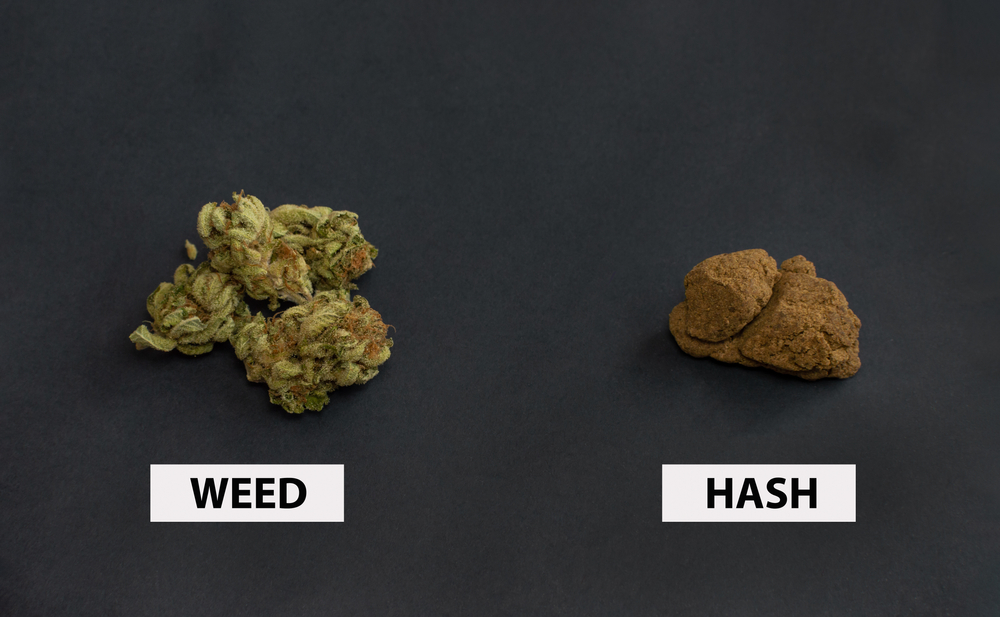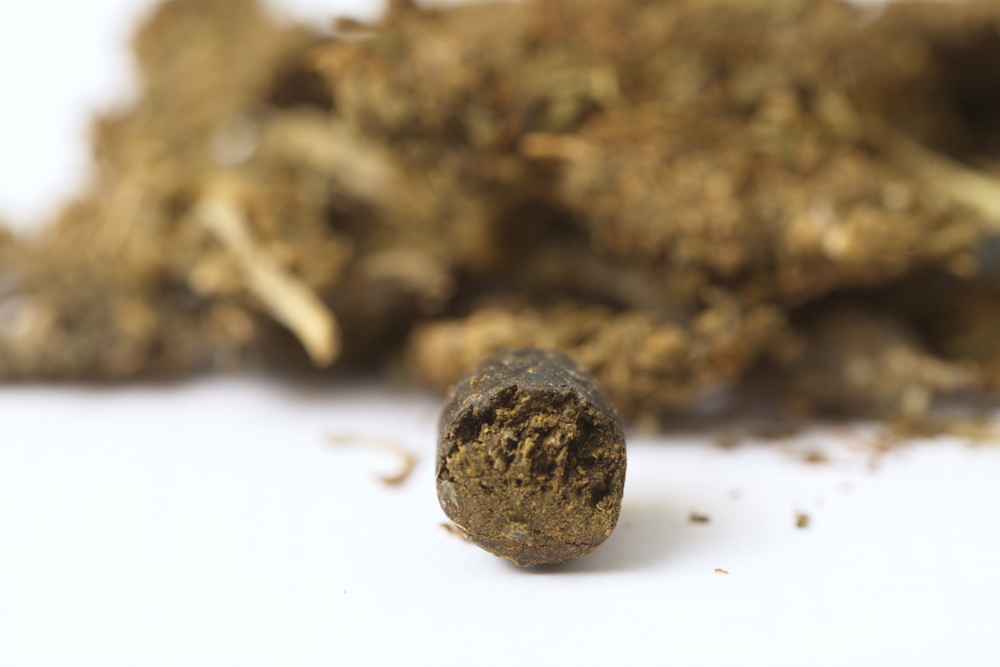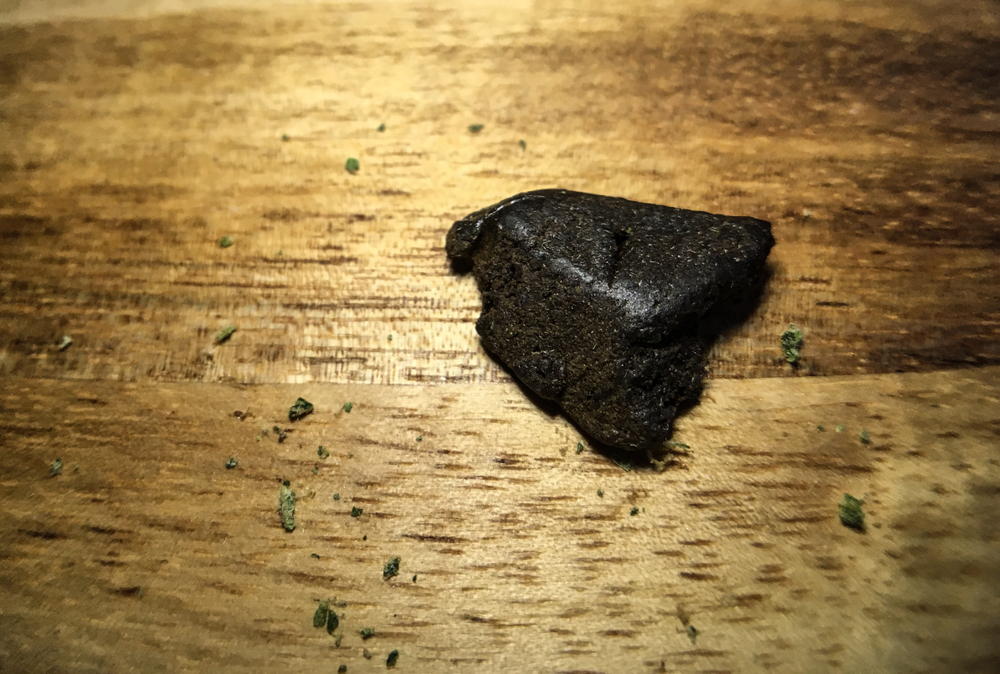Whether you want to try saving some money by making your hash at home or whether you just want to be creative at the same time, making hash is something that can be done both small scale and large scale depending on your goal. If you are making it just for yourself, the tools that you need are often fairly common household bits and bobs that have a place in the average kitchen. Just make sure you clean up after your experiments to keep everybody happy!
What is Hash?
Hash, also known as hashish, is a potent cannabis product. Hash is sourced from four different places which we have gone into more detail below.
Male plants are often discarded. They are of no use to most growers and it is best to remove them as soon as possible so they do not cross-pollinate any female plants. While this is fine for people casually growing at home who are happy to let the plants do as nature intended, serious and commercial growers will want to control their plant genetics as precisely as possible. Female plants have a higher cannabinoid content than male plants, so they are more valuable for this reason as well.

Fan leaves are the large distinctive leaves that are so often used in popular culture. Unless you are into cannabis, most people assume that the leaves are cannabis.
Sugar leaves are far less easily recognizable by people external to the cannabis industry and consumer elements. These are the small spikier leaves making up the majority of the plant. They are named after their distinctive fine dusting of trichomes.
Dried buds are your best option when it comes to getting high-quality kief to start with. Kief is the powder that is used to make hash. That said, whether you start with this option or start with leaves is entirely up to you depending on how much control you want over the process.
Hash Components
The components of hash that we will be focusing on in this article are trichomes. These are found in every edible, from gummies to brownies. They have a sticky texture that is not unlike resin. Another variant is the hair-like structures that you find on the raw buds when you purchase them. The ingredients that are important in hash are terpenes, CBD and THC. Terpenes are a type of phytochemical that causes the presence of aromatic oils in the plant. CBD stands for cannabidiol. It is the ingredient that particularly helps people who are taking marijuana for medical purposes. THC stands for tetrahydrocannabidiol. This is the chemical that results in the high.
Solventless
The solventless method of making hash is among the safest for people to engage in when making hash at home. This is also the most traditional method of making hash. All you need are your hands, a silkscreen and the raw material that you’ve selected. Stretch your skin over a frame and place it on top of a bowl. Begin by rubbing your chosen raw component onto the silk skin. This is to separate the trichomes from the rest of the product. This is often quite hard on the hands.
Solvent-based
This is not recommended for people working from home but we are going to go into some of the details just so then you know what the method involves. Solvent-based hashish-making involves using butane, propane or CO2 to separate the cannabinoids from the trichomes. The solvent residue then needs removing. This is always risky to do no matter the setting because the solvents used are flammable. This is clearly best reserved for people doing this on a commercial basis as they will have the safety equipment and precautions in place to be able to deal with the associated risks.
Making Hash at Home
Hand Rolling – Hand-rolling is the most labor-intensive method of making hash at home but if you are doing this just to see if you can, this is the option to go for. To make sure that you get as little residue into your hash as possible from your day to day activities, wash your hands first! When rolling, what you want to look out for is a black sticky residue. Enough to make small spheres is generally enough for a first trial batch. You can always experiment with your preferred quantities after you’ve successfully made your first batch.
Shoe Method – No surprises what this method involves! You need to wrap your raw material in cellophane and make a small hole to allow for the release of any trapped air. Place it in the heel of your shoe before you make a run to the shops and within anywhere from 15 minutes to an hour, your hash will be ready!
After your hash is done, all you need to do to finish it off is to put it in some molds and you’re done! With the shoe method, the heating part is done for you.
Kief to Hash
This is laborious. You need to roll the kief – a fine powder resulting from the methods above – between your palms. Every now and then, roll what you’ve produced into spheres and then continue the process again. This process warms the product and begins to make it stick together.

Blender
The blender method for making hash is simple. Put your raw component into the blender, add ice and then add water. Just like a milkshake! A very green milkshake… blend it just like you would if making something more delicious. Set up your silk screen in a colander to use as a sieve and the trichomes that you want will settle at the bottom of the jar. From there, empty ¾ of the water. Rinse, repeat. You need to do this 4 – 5 times before using a coffee filter to get the excess water off. Leave it to dry and you are done!
Conclusion
In short, making hash can be done many different ways. From commercial-level batch making using solvents or just making some hash to go in your brownies at home using the blender or hand rolling method, hash doesn’t have to be large-scale to be successful.

